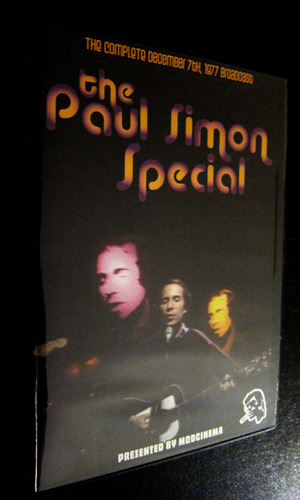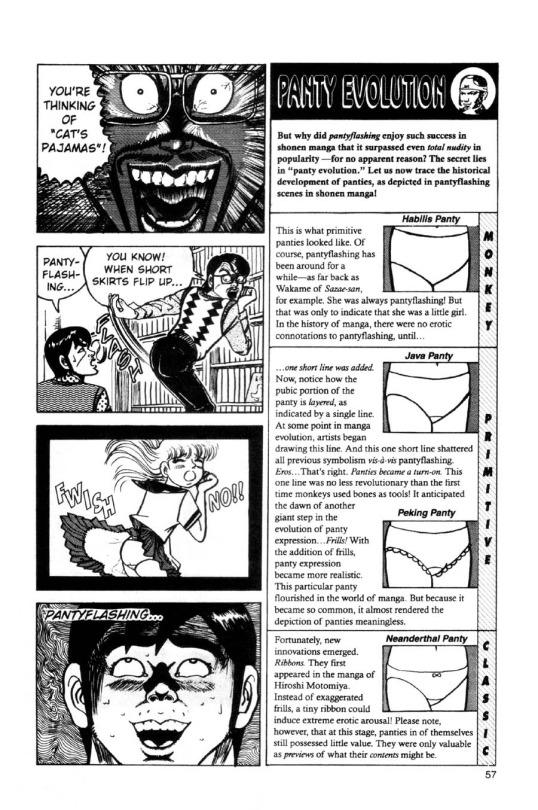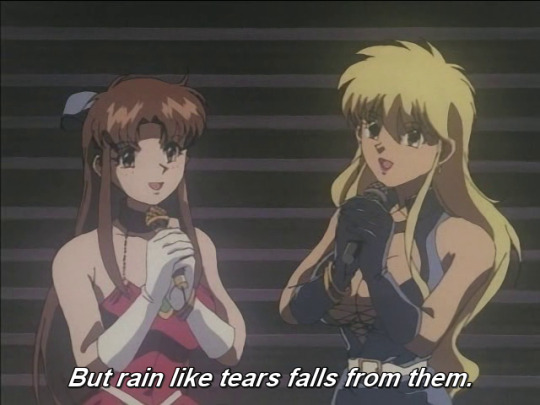#we're reusing an image from about 5 years later
Text








The Paul Simon Special and it's increasingly cursed box art and their insistence on using images from anything except The Paul Simon Special.
#also 90% sure they reused the photo with his hand on his chin and just...#photoshopped a different shirt and tie on him???#not only are we not using images from the actual special#we're reusing an image from about 5 years later#are we that bankrupt of paul simon photos that we had to do that?#they really like that photo from Live from Philadelphia#its the late 70s version of clickbait but with paul simons hairline#and u know what else#on the only three covers with pics from even remotely the same time as when the thing was filmed#we're gonna give you the most cursed imagery youve ever seen#the green one looks like a passport photo that isnt good enough to be a passport photo#its the most common box art from what i can see#but i dont want that thing in my house#also love how none of the reviews mention paul in the slightest#the ones that use pics from the special said yeah and we're gonna balance it out with the most illegible graphic design youve ever seen#all of these box arts have the same energy as my youtube thumbnails#listen they may be ugly but at least im not promising you more hair than youre getting#a really special special#yeah it sure is what the fuck#paul simon#the paul simon special#simon and garfunkel#simon & garfunkel#art garfunkel#chevy chase#snl#classic snl#s&g
10 notes
·
View notes
Text
Animation Night 169: Sex. 2.
So. Storytime.
Two years ago, we had a joke. "We should totally show some hentai on Animation Night 69." we said. Having said that, we were honour-bound to totally commit to the bit. Teaming up with @mogsk, I wrote a massive post on sexuality in animation and the history of 'hentai', from the hentai seiyoku discussed in 20th-century sexology journals to the modern subcultural kaleidoscope.
It is, genuinely, one of my favourite posts I ever wrote in this project. It's definitely not perfect - the sections on BL and the lolicon boom are especially weak, but still! There's no way I'm beating that.

Mogs, meanwhile assembled a perfectly pitched playlist of animation dealing with the theme of sexuality, from classic oldschool BL like Kaze to Ki no Uta to charming little comedies like Oruchuban Ebichu, and a scattering of actual h-anime like Weather Report Girl. For my part, I led with the genuinely classic film Kanashimi no Belladonna (Belladonna of Sadness).
So somehow - somehow! - we managed to make the idea of getting together with your online friends to watch a bunch of anime about sex just... plain fun and uplifting, to the point that @footsteps-on-the-dance-floor will tell me years later how much she enjoyed it. Not to mention, we got a pretty good cross-section of the different dimensions of sexuality in animation as well!
I didn't even get banned on Twitch.
This week, the counter has drawn the sex number. So can we do it again? Well, my friends, we're gonna try~ Tonight, @mogsk and canmom present: the long-awaited sequel to sex. Sex, 2.
This time we're narrowing our focus a bit. One of the distinctive elements of eromanga, by the analysis of Kimi Rito in The History of Hentai Manga, is how particular images get encoded as signs that can be reused by other mangaka, and these signs can become the seed for particular subgenres. So, our selection tonight is in part designed to give a brief cross-section of some of these visual tropes.
So let me introduce you to our program. CWs: sex, obviously; also a couple of these films (Cleopatra, Parade Parade) cw for rape. Here's the programme, read on for brief descriptions of each item and a lil cultural context~!
Cleopatra (1970) - oldschool Tezuka weirdness
Boku no Sexual Harassment (1994-5) - 90s salaryman BL
Interspecies Reviewers (2020) - monstergirl sex comedy, and an instance of the trend of recent cable TV h-anime
Agent Aika (1997-9) - panty shots to the most ludicrous degree
Comical Psychosomatic Medicine (2015) - ONA comedy framed as fetish education
Parade Parade (1996) - futanari + yuri
Golden Boy (1995-6) - 90s sakuga and a classic comedy
Queen's Blade (2009) - kyonyuu
Colorful (1999) - panty-centric comedy skits
after that: if you still have energy, I might take requests~
[n.b. a lot of these are TV series - we will only really be getting a 1-2 episode sample of each one, for runtime's sake.]
Cleopatra (クレオパトラ), 1970

Last time we led with certified classic, genuinely moving and good as hell film Belladonna of Sadness. This was part of a last gambit by the struggling Mushi Productions, the studio of Osamu Tezuka, credited with inventing TV anime back in the day with Astro Boy. Long before there would be such a thing as an h-anime subculture, Tezuka experimented with creating erotic animated films based on history and mythology.
Belladonna is the best remembered of the three, and with good reason. Tezuka was largely not involved by this point. The others, though... are some plain fucking weird movies, I'll tell you that much. So tonight we'll be watching Cleopatra (1970). I may have shown you the trailer before - this is the Caesar trampoline movie. That is only the beginning.

I recently finished reading Osamu Tezuka's manga Ayako, written in 1972-1973 - not long after this movie, actually, during Tezuka's gekiga phase. I'm sure it's common knowledge by now, but Tezuka was one horny old guy! Ayako has all manner of skulduggery: incest, murder, gangster stuff, more murder, etc., but the core story is about a girl who is imprisoned in an underground cell for 20-some years by the machinations of her family. As she grows up, she ends up in an incestuous relationship with her protective brother - and once she finally escapes, she is highly agoraphobic but also throws herself at nearly every man she meets.
It's very much a story of the sins of the past echoing down into the future, shot though with post-war history and gangster movies, but its central fixation is the figure of Ayako herself: the soft cloistered object of obsession and attraction. Whether they want to protect Ayako, seek absolution from her, fuck her, or exploit her.
But it's also in places a really wacky manga, with a lot of very comical contrivances or hyper-cartoonish panels with extreme squash and stretch. It's a completely different way of displaying action.
I think this gives me a sense of the sort of wavelength Tezuka was on when he draws a scene where Cleopatra is tied down by stakes and a bunch of guys line up to rape her while she shouts at them defiantly. It's all very theatrical, a huge contrast to the much more internally oriented Belladonna. Just a plain strange movie, but it's one I've been fascinated to watch for ages.
Whatever we make of Cleopatra, we'll jump into the program that Mogs drew up! Once again she's come through magnificently.
My Sexual Harassment (僕のセクシャルハラスメント), 1995-6

Our next act is some old school yaoi! One day I'll get to do that big effortpost on the history of BL, but not this day. In any case, Boku no Sexual Harassment is an OVA from the mid 90s about a young man called Junya Mochizuki trying to fuck his way up the company ranks for the sake of himself and his partner Kazunori Honma. In particular, he has an affair with his boss, Mr. Honma, running across the whole OVA.
This is perhaps best known for an infamous scene involving corn. It's here as a window into this period of BL - not quite as high-mindedly aesthetic as its 80s predecessors, and with its erotic focus being on like... 90s salarymen, which is quite a specific thing!
Interspecies Reviewers (異種族レビュアーズ), 2020

Next, a series which has the dubious distinction of proving too steamy for Crunchyroll. Interspecies Reviewers enters the general milieu of modern videogame-inflected fantasy anime, a comedy dancing along the line of whether it's too overtly porn to air on TV. The story tells of a group of fantasy characters who are the clients of monstergirl sex workers, hoping to encounter as many different species as possible. This is a frame device for a series of episodes focused around what it would be like to have sex with various kinds of monstergirl.
This is an example of a recent trend in TV anime, namely very overtly sexual cable TV anime such as High School DxD, which have in a way come to fill the gap left by OVAs. This is a niche that also includes the likes of Goblin Slayer and Redo of Healer. In contrast to those series' "big grimdark plot with a side of rape" approach, Reviewers is light-hearted fantasy sex comedy mixed with (if you live in China) a certain amount of actual porn, which fansubbers have kindly spliced back in to the censored release for us.
Agent Aika (AIKa), 1997-9

The panty shot is one of the more popular visual tropes in eromanga, to the point that Even a Monkey Can Draw Manga dedicates a whole two page spread to the history of the trope. (Surprisingly, I can't find any more substantial account in Kimi Rito's History of Hentai Manga).


You'll see it often enough in anime, overtly or subtly, and certainly in the early works of Katsuhiko Nishijima, who debuted in 1986 with Project A-ko, a classic Kanada-inflected OVA that still bears signs of its hentai roots. But there is nothing that takes the panty shot to the same extreme as Agent Aika (1997). The degree to which the camera in this action anime contrives to show panties at a machinegun rate... it crosses over into a level where it feels less like outright fetish material and more like experimental art.
This is a series that is only coherent through the erotic focus. And yet, it's not generally categorised as porn. Nobody actually fucks. Lines are very arbitrary...
Comical Psychosomatic Medicine (アニメで分かる心療内科), 2015

This ONA adapts a gag manga series themed around the idea of an education series on fetishes, paraphilias, and so on - not so different in concept from Peepoodoo and the Super Fuck Friends, from the sound of it! The ONA is produced by Shin-Ei Animation, a venerable studio known for beloved characters like Doraemon; it's a bunch of five minute bite-sized chunks which I plan to sprinkle in between the other stuff we watch as a palate cleanser.
Parade Parade (パレードパレード), 1996

Having warmed you up sufficiently, this is the point in the evening where we pull out the futa porn.
Parade Parade is an OVA by the studio Pink Pineapple, one of the giants of the 90s erotic OVA scene - I wrote about them a bit last time. It's a relatively "tasteful" example of the futanari (二形) trope, literally 'two forms', referring to basically a character with a mostly cis woman-typical body except for a penis (generally in addition to a vulva), which she will typically use in penetrative sex. This is typically represented as either the result of magic, an intersex condition, or just a fantasy world where it's not unusual.
Depending on your subcultural corner, this might be further distinguished from other niche variants of dickgirl (e.g. a futa must have both sets of genitals).
In anime and manga, the futa trope apparently traces back to the introduction of American trans porn magazines to Japan, inspiring mangaka such as Kitamimaki Kei to start drawing futanari characters. Futanari manga first spread through dōjinshi in the 80s, and became popular in eromanga in the 90s, before circling back to the West. So actually yeah I guess this one is on us trans girls! I always assumed it was like, an independent invention. The more you know...
Here we have succesful idol Kaori, who's secretly intersex - and only her girlfriend Yuko knows. She's very careful to let nobody know, for the sake of her career, but a rival lesbian idol is about to find out...
Golden Boy (1995-6)
youtube
Now here is a true classic.
Golden Boy is a comedy series about a wanderer named Kintaro, who dropped out of uni to travel around Japan getting into sexual escapades. Each episode, he runs into someone and hopefully falls for them while coming across as an idiot pervert, but gradually reveals that he's actually a decent and resourceful guy - and yet, having found love, there will always be a reason he must move on. A setup to hang all sorts of plots, carried by some honestly unreasonably impressive animation from the realist school, most notably Mitsuo Iso. It's just... very very well done.
The above clip did the rounds on here a while ago (I think maybe the dubbed version), and we will indeed be watching episode 4 to put that in context.
Queen's Blade (2009)

So this is a studio ARMS OVA - the guys who did stuff like Mezzo Forte with Yasuomi Umetsu - a fantasy story about a warrior tournament. But for our purposes it's standing in for the 巨乳 kyonyuu subgenre - meaning 'huge boobs'. So if you wanna do the meme in Japanese, that's the word you need.
This has a rather specific history in eromanga, recounted by Kimi Rito in The History of Hentai Manga. Per Rito, the popularity of the term dates back specifically to 1989, where it was used to promote porn star Kimiko Matsuzaka, as well as Western gravure porn magazines. Gradually displacing other terms like 'D-cup', the onomatopoeic ボイン boin and portmanteau デカパイdekapai, kyonyuu soon became cemented as the term for a type of character design. It grew in popularity in the space opened up by the bishōjo genre established by the lolicon boom.
So under the pen of mangaka like Kei Keitamimaki (him again!), designs with massively exaggerated boobs became very popular, defining a subgenre of their own. Artists would sometimes express anxiety over whether they would be 'allowed' to draw such extreme designs, but it became widespread in seinen magazines. Gradually, these genre boundaries dissolved and boob size started to become a symbol of characterisation.
Queen's Blade is a fairly longrunning series but as far as I understand, it's broadly a silly ecchi anime about women with very large boobs fighting to become queen. It's not the most comical example of this trope necessarily (nothing can really beat High School of the Dead's supersonic bullet dodging tits) but it's pretty up there.
Colorful, 1999

Colorful is a comedy series of brief (~7 minute) skits about boys trying to see panties and suffering many consequences. As a late 90s anime it's got some interesting stylstic Y2K stuff - look at that rotoscope clip! - as well as strong animation from people like Norio Matsumoto of Naruto fame.
So!
Mogs's encylopedic knowledge of weird obscure horny anime once again coming to the rescue: I'm fascinated to see where this night will take us. And whether I'll still have a Twitch account tomorrow.
I realise this is a much later start than we'd like with such a big programme, but I hope you will come join me for some weirdly educational sexy animation! Dip in and out or stay for the whole programme, the choice is yours - see you at twitch.tv/canmom, going live now, programme starts in about 30 minutes at 22:30 UK time!
Animation Night 169 is gonna be a little postponed - we'll be going at 7pm UK time on Tuesday (29 August) at twitch.tv/canmom! Hope to see you there! I will try to write a little more interesting info as we lead up to that~
63 notes
·
View notes
Text
Circular construction too expensive? Not if you look at it differently

The Satellite, Dutch Central Bank
In the longer term, building with recycled, circular materials is not only better for the planet, but also cheaper. During the Provada trade fair, experts will try to convince the financial and real estate world of this. "We're still looking too much at the initial investment."
According to the latest Circle Economy report[1], although 88 percent of construction and demolition waste in the Netherlands is recycled, it is mainly used for low-value applications, such as road foundations. Only 8 percent of the building material used is actually circular.
Image is incorrect
Technically, much more can be built in the Netherlands with circular materials such as wood, concrete or aluminum. Then why doesn't that happen? Too expensive is often the conclusion of developers, banks and property owners. That picture is incorrect. We need to look much more at the value and costs of buildings on the longer term, the saved CO2 emissions, energy and raw materials, says Martijn Veerman, specialist circular facades at Alkondor[2]. "We are still looking too much at the initial investment. What does something cost now? Can I afford it now? But we don't consider a period of thirty years; looking at the adaptability or the CO2 impact," he says.
Panel discussion on Provada
During the Provada trade fair[3], he will be part of a panel[4] with other experts on Wednesday 14 June entitled 'The value of circular materials in the business case'. Experts, from developers to architects and manufacturing companies, who focus on circular products. They want to give construction companies, developers, property owners, investors, banks and other visitors new insights into the circular economy. “It requires a completely different way of thinking,” he says. “Per definition, it is about a longer lifespan. It's about flexibility. If you come up with something today, how can you change it over time? You now see a lot of vacant real estate in the offices sector, while there is a huge housing shortage. This has to do with laws and regulations, but also with the technically limited possibilities for a refurbishment without stripping everything for recycling. Higher requirements are set for the quality of homes and less for office buildings. That is not so easy to upgrade. Moreover, stripping and rebuilding is extremely expensive.”
Nederlandsche Bank as an example
According to him, there is a world to be won by designing buildings in such a way that they can be taken apart more easily and the parts can be reused later. This has hardly been thought of in the past thirty years. As a result, the quality of buildings at the end of their lifespan is poor. A positive exception is the headquarters of De Nederlandsche Bank (DNB) in Amsterdam, The Satellite[5] . New Horizon[6] and Re:Born have completely dismantled the building, after which all parts are given a second life. For example, the facades. Veerman: “There we saw that the DNB delivered gigantic quality in the 1980s, when the tower was built. Those elements are perfect for reuse. Only there was the problem that the connections were difficult to get apart and a lot was glued together with adhesive to make everything wind and airtight. Alkondor carried out research and tests on a number of facade elements in its factory for RE:Born and New Horizon. The conclusion: more quality offers more value in the future. We could literally reuse that building one-to-one. Unfortunately, practice shows that it is a huge challenge.”
Aluminum mining from buildings
Veerman works for Alkondor, De Groot & Visser and Wicona's 'daughter company' Ciskin[7], the Circular Facade Company, among others. That designs circular facades of recycled aluminium. “Everyone is shocked by that, because that is CO2-intensive. But our partner Wicona[8] harvests this material from buildings and converts it into a premium façade product of the same quality,” he explains. “Wicona is part of the Norwegian Hydro[9], one of the largest aluminum producers in the world. They have discovered that their mine to dig in is no longer the bauxite mine, but the built environment.”
Because aluminum is made at high temperatures and therefore with a lot of energy, this produces a lot of climate benefits. Wicona processes 200,000 tons of material annually and reduces it to pure, high-quality aluminum. This results in global CO2 savings of 85 percent compared to traditional aluminum from bauxite.
Circular value not included in valuation
If green hydrogen can be used for the remelting process, that percentage will increase further. But according to Veerman, it is mainly about the continuous reuse of aluminum facades and extending the technical lifespan. “We are strongly committed to this with Ciskin. But banks and investors are shocked by this and say: I won't do that. I only see risks. Ultimately, this facade is about 10 percent more expensive than a traditional cavity wall or a timber frame construction element. So the value of that circular, detachable facade with a longer lifespan is never found back in an appraisal or financial plan. We are never looking beyond twenty or thirty years nowadays.”
Circular construction cheaper
Subsidies are available for this type of circular construction product, which equalizes the price somewhat. But according to Veerman, building with circular materials is cheaper if you take the so-called Total Cost of Ownership (TCO) into account. These are all costs that an owner incurs during the life of a building or home. So not only during construction, but also when adapting to stricter environmental and climate regulations that are coming. Or during the demolition phase and the removal of rubble and waste. The total cost of housing construction is on average 2.4 times higher than the initial construction investment. Because CO2 emissions are becoming more expensive and the EU is imposing stricter environmental and climate regulations, sustainable buildings with circular materials are cheaper in the long term. And buildings with primary raw materials more expensive. Governments can also impose further requirements. For example, since this year the Dutch Central Government Property Agency[10] has been setting stricter requirements for the use of circular materials when tendering renovation and construction projects for the government.
Source
André Oerlemans, Circulair bouwen te duur? Niet als je er anders naar kijkt, in Change Inc, 9-06-2023, https://www.change.inc/infra/circulair-bouwen-te-duur-niet-als-je-er-anders-naar-kijkt-40045
[1] The Dutch built environment might be resting at the centre of a perfect storm—but circular strategies can help it meet its environmental goals as well as the social need for new housing, while reshaping the employment landscape. The Circularity Gap Report for the Built Environment in the Netherlands shows how. https://www.circularity-gap.world/sectors?_ga=2.145431920.559754559.1686412078-2025830176.1679753316#download
[2] Alkondor Hengelo is a leading facade specialist in the Netherlands. The facade is the business card of your building and represents a significant part of your investment. In addition, the facade makes an essential contribution to the energy saving of a building. The functions of the facade have a great influence on the well-being of the building users. https://www.alkondor.nl/
[3] PROVADA is known for being the largest real estate fair in the Netherlands. With more than 200 exhibitors from the real estate sector - from project developers, investors, builders, architects to financiers, advisers, brokers and housing associations - and more than 70 municipalities, provinces and the national government, the public sector is well represented at this real estate fair where the public-private connection is central to programming. Every year in June, PROVADA can be found in RAI Amsterdam for a three-day exhibition with an attractive programme, physical stands and networking opportunities. https://www.provada.nl/nl/over-ons/
[4] Circular building is great! However, circular construction is too expensive from a linear point of view! But is this correct? Shouldn't a circular development be approached 100% differently? And how do we implement this in the current real estate market? Or: “How can investors and property owners create value with circular materials?” With a very diverse integral panel, we deal with these questions in an interactive way with the audience!https://www.provada.nl/nl/provada-2023/programma/view/1653/de-waarde-van-circulaire-materialen-in-de-business-case?_ga=2.254614988.559754559.1686412078-2025830176.1679753316
[5]The Satellite, the round tower of the office building of De Nederlandsche Bank, will be given a second life at a different location in Amsterdam. The initiative came about through the collaboration of Strukton Worksphere with partners New Horizon and RE:BORN. On Tuesday, the so-called constructive dismantling of the tower at its current location started. After the parts have been carefully dismantled, they will soon be used for the construction of a new building elsewhere in the city. https://www.dnb.nl/algemeen-nieuws/nieuwsbericht-2020/de-satelliet-de-ronde-toren-van-de-nederlandsche-bank-krijgt-tweede-leven/?_ga=2.153833980.559754559.1686412078-2025830176.1679753316
[6] Read also: https://www.tumblr.com/earaercircular/650959780738924544/recycling-concrete-makes-a-big-leap-forward?source=share
[7] How does a Ciskin facade work? The design, development and realization of new structures, or the renovation/transformation of existing structures increasingly requires a well-thought-out sustainable and/or circular concept. With regard to the facade, the Circular Facade Company has the solution for you. We offer a circular facade concept that provides an answer to the circular principles and challenges you encounter when designing buildings.https://circularfacadecompany.com/?_ga=2.245710144.559754559.1686412078-2025830176.1679753316
[8] The deep-rooted idea of sustainability is fulfilled in a unique way by the use of recycled aluminum from Hydro. Hydro is pushing the boundaries for low-carbon aluminum and using post-consumer scrap to make recycled alloys and products. The use of sustainable and recyclable materials with a low carbon footprint contributes to a reduction in global emissions and creates products for a more circular economy. Hydro CIRCAL is a range of premium aluminum made with a minimum of 75% recycled post-consumer scrap. Hydro CIRCAL has a CO2 footprint that is one of the lowest in the world: 2.3 kg CO2 per kilo of aluminium, certified by an independent third party and accompanied by an Environmental Product Declaration (EPD).
[9] Norsk Hydro ASA (often referred to as just Hydro) is a Norwegian aluminium and renewable energy company, headquartered in Oslo. It is one of the largest aluminium companies worldwide.It has operations in some 50 countries around the world and is active on all continents[citation needed]. The Norwegian state owns 34.3% of the company through the Ministry of Trade, Industry and Fisheries. A further 6.5% is owned by Folketrygdfond, which administers the Government Pension Fund of Norway. Norsk Hydro employs approximately 35,000 people.Hydro had a significant presence in the oil and gas industry until October 2007, when these operations were merged with Statoil to form StatoilHydro (in 2009 changed back to Statoil, which is now called Equinor).
[10]The Rijksvastgoedbedrijf (Central Government Property Agency) will reward project developers in tenders who use as few new materials as possible for construction and renovation. In practice, this means that building materials that emit a lot of CO2 - such as steel, concrete and brick - will make way for renewable raw materials. Wood for example. Builders are also given priority over renovation and demolition projects if they find a new destination for materials released from the building to be renovated. https://www.rijksvastgoedbedrijf.nl/aanbesteding-en-samenwerking/nieuws/2022/09/01/rijksvastgoedbedrijf-scherpt-circulariteitseisen-bouwers-aan?_ga=2.152845821.559754559.1686412078-2025830176.1679753316
0 notes